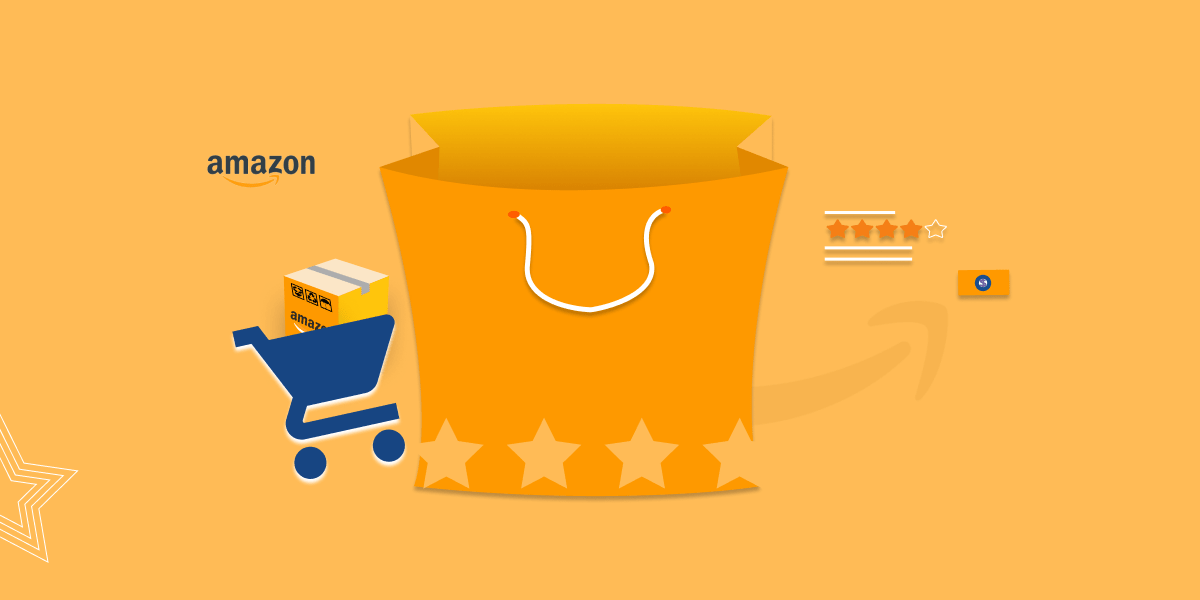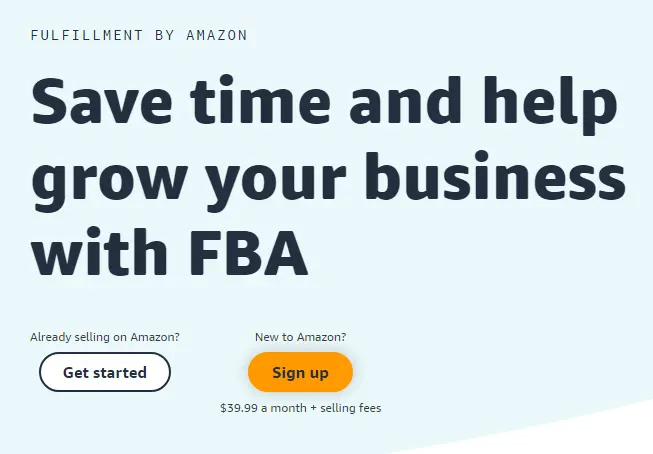
Amazon captures over 50% of online eCommerce transactions in the US alone, making it one of the primary ways that big brands and agencies create sources of revenue. If you are looking to compete in that arena, you should consider selling directly to Amazon.
Amazon gives two options for anyone wishing to be a seller. The most commonly used option is through Amazon Seller Central, which is essentially a 3rd-party (3P) seller platform.
For agencies and big brands looking to get exclusive marketing offers from Amazon, they should seek to sell directly to Amazon itself, using Vendor Central, their 1st-party (1P) seller platform. By selling directly to Amazon, you’ll essentially have Amazon’s stamp of approval, giving you access to their resources, and a whole host of other benefits.
The benefits of being a 1st-party Amazon seller
The biggest reason many sellers choose to utilize the 1P option is that you get paid much faster. As a 3P seller, you only receive revenue at the end of the month you make a sale in, which, for an average product selling velocity, can be weeks or months from when you send products to Amazon’s fulfillment center. In contrast, as a 1P seller, you can receive payment in as little as a few days after completing the purchase order.
Amazon will also make bulk purchases of your product, which is fantastic for inventory forecasting.
You earn the all-important “Ships from and sold by Amazon” seal of approval, which displays by the Buy Box and increases conversion rates significantly.
As a 1P seller, Amazon will allow you to utilize product listing page functionality exclusive to Amazon, this allows you to stand out more on the market. Amazon’s merchandising team will be the ones optimizing your product detail pages, and while they may not devote the time a 3P seller might to polishing their listings, they do know a thing or two.
Marketing of your product
When you are selling to Amazon, they will personally handle the marketing of your product through AMS (Amazon Marketing Services).
They already control the listing and the price, so paying for marketing is something they offer. The marketing is altogether a blind purchase because they provide little transparency and the sales attribution is difficult to determine as a seller.
Along with their marketing, you also have access to Amazon’s A+ content, allowing you to better convey the product features and benefits through multimedia.
How to sell directly to Amazon
Being a 1P seller is invite-only, so you start as a 3P seller, and many brands, even though they manufacture and sell their own product, remain 3P sellers.
If your product is doing well on Amazon consistently, then you have a chance of receiving that invite.
If you succeed in being invited to become a 1P seller, it is worth noting that with this arrangement you relinquish much of the control from your end.
What Amazon controls
Before accepting that invite, you should know what it entails:
- Pricing: Amazon will control the price of your product. They will consider every other store’s price (both online and offline stores) and list it at the lowest price possible.
- Customer messaging: Amazon will handle all customer messages and returns.
- Product logistics: They will ultimately handle the logistics of your product sales.
The cost of selling direct to Amazon
On top of Amazon controlling the price of your product, you will also have to pay them for their return allowances, slow movers, marketing co-op funds, etc. Taking all of that into consideration means you’ll see around 10% taken off the top of your margins. You are essentially making wholesale, rather than retail margins, which isn’t for everyone.
Amazon 1P sellers also have to pay a monthly fee of $39.99, which exempts them from the $0.99 fee per item.
Why pick one over the other? The answer is simple, “Can I afford it?” To considered becoming a 1P seller, your product must bring in significant sales and, most importantly, have comfortable margins.
Amazon referral fees
The Amazon Marketplace Referral Fee is the percentage of your item price based on its category and price. For example, the Clothing and Accessories category has a 17% referral fee (and minimum of $0.30 per item). Amazon publishes all its referral fees.
Amazon fulfillment fees
When selling directly to Amazon, you will still be subject to their fulfillment fees to pack and ship your products. Amazon breaks their fulfillment fees down into tiers by size and weight.
Fulfilling orders through Amazon

As a 1P seller Amazon marks those products as “Ships from and sold by Amazon.”, which many shoppers view as an indicator of a trusted brand, and also indicates a product will be shipped Prime, which is fast and free. This method of Amazon fulfillment is known as FBA (Fulfillment By Amazon). This does come at a cost for handling, storage, item weight, pick & pack, etc.
What is FBA?
FBA allows Amazon to handle the storage and shipping while also allowing your product to be shipped through Amazon Prime.
FBA fees are all calculated, taking into consideration: item weight, handling, storage (sq ft.), and pick & pack. This means that the FBA fees for any product will be different and should be handled case by case. In another blog post we explain Amazon FBA fees in-depth and how it varies per seller.
Remember, as a 1P seller you are forced to use FBA for your products, so it is important to consider the costs and what would work best for your business.
Why use FBA?
FBA is for those who wish to automate their Amazon process to almost 100%. While you will still have to manufacture your product, you no longer have to deal with marketing, storage, shipping, customer service, or pricing.
Inventory management
Inventory is something any seller has to deal with, whether or not you are 1P or 3P Amazon seller. However, there are some major differences when it comes to inventory demand.
When selling to Amazon directly, they will personally store your products, but they also have an inventory requirement that you must meet at all times. This can be a challenge with a popular product because if you are are also the sole manufacturer, you may have to work hard to consistently meet the inventory demand.
In those situations, it may be good to look into outsourcing production; if you cannot, you may have to find an alternative way to boost production.
Customer experience
If customer experience is imperative to you and your brand, selling directly to Amazon might be difficult. Amazon has curated their brand for years and intends to uphold it, and that includes when they decide to put their name on your product.
When your are a 1P seller, you hand overall customer service to Amazon. For some, this is an amazing benefit, but for others this can be risky if they are aiming to carefully curate their own brand image.

Photo by flamingo from the noun project
Product Launches
As with any product or brand, there is a constant need to innovate and upgrade. When your are a 3P seller, listing a new product is simple and doesn’t require anything more, but this changes when your are a 1P Amazon seller.
Amazon allows you to sell directly to them because that product did well in their market, and they saw profit in doing so. Even with that, introducing a new product is not easy.
This is because Amazon has not seen how well that product will do and if it will provide the same margins as the product they are currently buying from you.
If you want to introduce a new product, it will have to go through the same process as the first product that Amazon decided to buy from you. Meaning you have to rinse and repeat every time.
So is selling directly to Amazon worth it?
Selling directly through Amazon is only worth it if it fits your needs. It can help with marketing, handling inventory, and overall growth of your brand or product on Amazon itself. It is really up to you as a seller to consider the different costs of each strategy, how much work you can put into it, and if you are willing to meet all of Amazon’s standards day in and day out.

